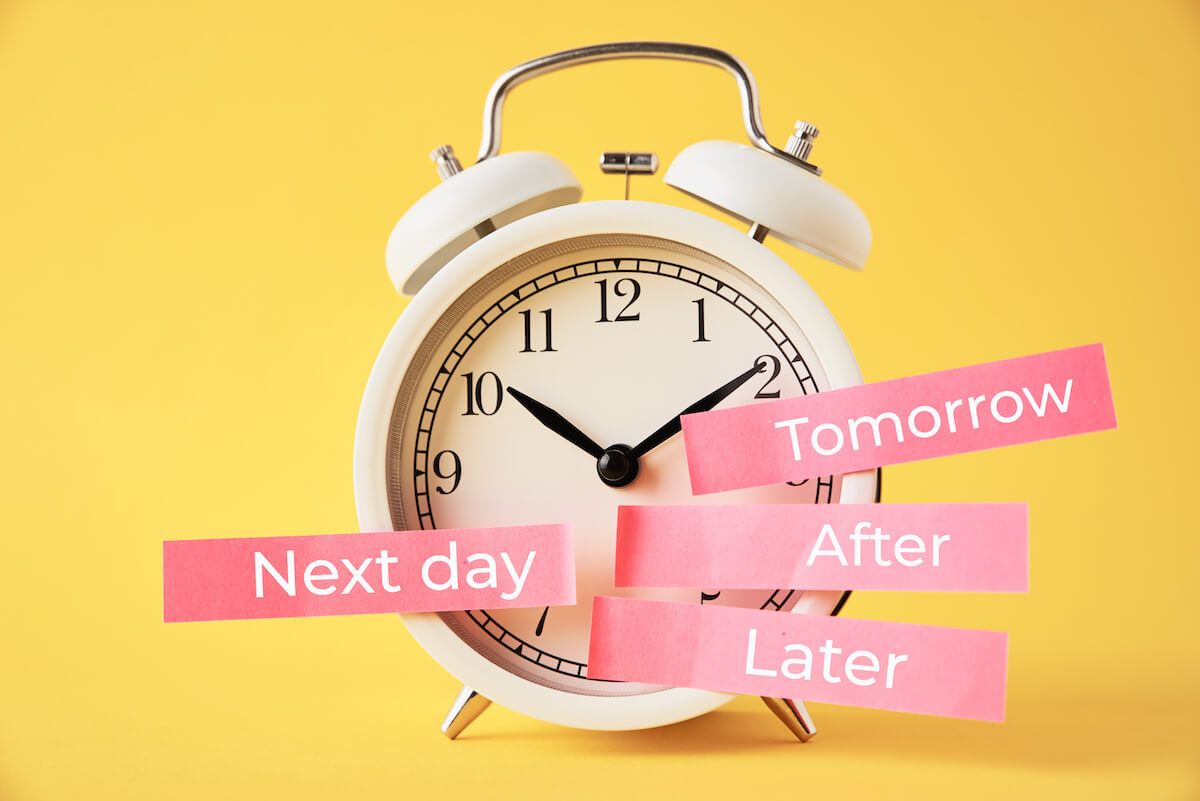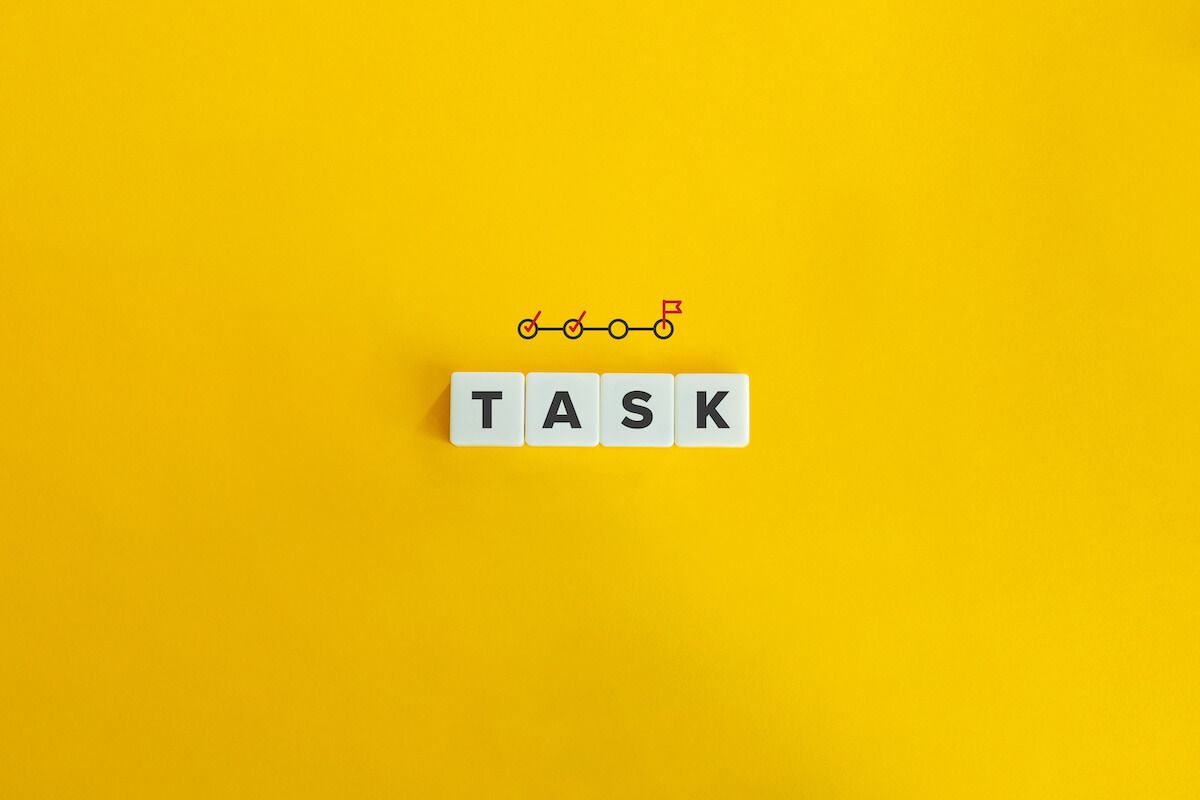It's 8 a.m. on a Monday morning, and you're already behind on your to-do list. You have three projects due today, and you'll only finish them if you get moving pronto. So you start with the most straightforward task — checking your email.
But as soon as you open your inbox, you realize you still need to reply to an important email from Friday. Then you notice a reminder for a 10 a.m. meeting that you still need to prepare for, and to top it off, your phone is ringing.
This is, unfortunately, an all-too-common scenario for anyone trying to manage multiple tasks. If you're struggling to keep everything on track, don't worry — you're not alone. Many of us find it tough to manage multiple projects, especially when it feels like they're all due at the same time.
Managing multiple tasks can be daunting, but it can be done with a little organization and foresight. In this guide, we'll share some tips and tricks that'll have you juggling multiple tasks and save time.

The modern workplace is busy — we're often dealing with deadlines, meeting with clients, collaborating with colleagues, and trying to stay on top of our email inboxes all at the same time. On top of that, we have personal lives. We need to pick up our dry cleaning or grocery shop on our way home from work. We're trying to maintain relationships, stay healthy, and maybe even get some sleep.
Many of us find managing all these competing demands on our time challenging. It's not because we aren't capable or don't have enough time. It's because our brains weren't built to handle many tasks simultaneously. Science shows our brains are designed to focus on one thing at a time. This passage from researchers Kevin P. Madore, Ph.D. and Anthony D. Wagner, Ph.D., explains it well:
"... multitasking is almost always a misnomer, as the human mind and brain lack the architecture to perform two or more tasks simultaneously. By architecture, we mean the cognitive and neural building blocks and systems that give rise to mental functioning. We have a hard time multitasking because of the ways that our building blocks of attention and executive control inherently work. To this end, when we attempt to multitask, we are usually switching between one task and another. The human brain has evolved to single task."
When we try to do multiple tasks at once, we aren't actually doing them simultaneously. As a result, our brain switches back and forth between them as though we have too many tabs open. This is called task switching, and it has many consequences.
It might seem logical to multitask to accomplish more, but in reality, it can be counterproductive. Task switching is a cognitively demanding process that significantly impacts our focus. An abundant amount of research exists on the brain's ability to multitask, focus, and switch between tasks, and the costs of switching jobs are clear:
These are just a few of the dangers associated with multitasking. In addition to the cognitive and emotional costs, there are also social costs. Spreading our attention too thin makes it difficult to be present in the moment, perceive social cues accurately, and pay full attention to others. We may come across as indifferent or distracted, leading to miscommunications in relationships.

Juggling multiple tasks at work can be challenging, yet it's unavoidable. Our workdays are filled with meetings, deadlines, and projects that require our attention. And if you're one of the 27.6 million people in the U.S. who work primarily from home, managing multiple tasks is simply a way of life.
The key to managing multiple tasks effectively is understanding how your brain works and using that knowledge to your advantage. Here are seven science-backed strategies to manage various tasks, avoid the switch cost effect, and boost productivity.
The first step in managing multiple tasks is to list everything you need to do. Creating a master to-do list ensures you maintain a big-picture perspective and don't forget anything important.
To make an effective primary to-do list, keep it simple. This is a high-level overview that you'll prioritize and refine later, so don't overthink it. Just jot down a list of tasks, giving each job its own bullet point. As new things come up, add them to the master list. Having one place to go for a comprehensive overview of your to-dos will help you feel less overwhelmed.
Once you have a master to-do list, begin prioritizing your tasks and dividing them into smaller, more manageable chunks. This is where the real work begins — and where many people get bogged down.
Every Sunday evening or Monday morning, sit down and review your primary to-do list to organize tasks for the week. You can use task management software, project management tools, or handwrite in a planner. As you look at each job, ask yourself questions like:
You can also use project prioritization methods like the Eisenhower matrix to help you sort your tasks. Just be sure you're focusing on the most critical priorities.
Now that you know what tasks need your attention, it's time to start planning your days. This is where task management comes in. Task management involves organizing your work and scheduling your to-dos to work smarter, not harder. Managing your tasks ensures you have the right amount of time to work on what matters most.
Several task management methods are available, so experiment to find the best way for you. If you prefer visual aids, consider using a Kanban board to track your tasks. This system uses cards and columns to help you visually organize your work and see what needs to be done next.
Task batching is another effective method for managing multiple tasks. This involves grouping similar tasks together and working on them in batches. For instance, if you need to write three blog posts, you can batch the writing part of the task by setting aside a few hours to write all three posts at once. This helps you avoid task switching between different tasks and allows you to get into a flow state.

Once you have a task management system in place, it's time to start thinking about optimizing your workflow to ensure you have enough time for multiple tasks. This is where time management comes in. Time management is the process of using your time wisely to achieve your goals.
While everyone has their own time management preferences, the Pomodoro Technique is a popular place to start. This time management strategy breaks work down into 25-minute intervals, or pomodoros (Italian for tomato, named after the tomato-shaped timer creator Francisco Cirilli used to time his sessions).
Use the Pomodoro method by setting a timer for 25 minutes and only working on one task until the time is up. Then, break for five minutes. Allow yourself 15 to 20 minutes to relax after four Pomodoro sessions. This time management strategy can help you stay focused, avoid multitasking, and discover how much time you truly spend on each task.
One of the biggest challenges of managing multiple tasks is staying focused on a single task when working. There are so many distractions around us — Slack messages, social media notifications, phone calls, even our thoughts! It's easy to get sidetracked, but there are ways to reduce distractions and boost focus.
First, try to minimize distractions by turning off notifications, setting up an away message, and putting your phone on do not disturb. Block distracting websites and apps using a productivity app like Freedom. Noise-canceling headphones are also helpful for chatty coworkers or noisy family members.
If you need background noise to help you focus, white noise can help drown out distractions. Research shows some evidence that binaural beats might improve focus and cognition. Everyone is different, so experiment to see what works best for you.
Just as it's important to focus when you're working, it's also essential to take breaks when you need them. If you're feeling overwhelmed by multiple tasks, step away from your work and take a few minutes for yourself. Breaks are important for maintaining focus and avoiding burnout. Go for a walk, meditate, or do something else that helps you relax and recharge.
The key to avoiding those overwhelming moments is to schedule regular breaks in the first place. Schedule a few moments between items on your list of tasks, or take a break every 25 minutes with the Pomodoro Technique. Once you get in the habit of resting at regular intervals, it'll be easier to stick to it.
Flexibility is a critical part of any task management system. No matter how well you organize tasks or how perfect your system is, there will always be times when things go differently than planned. When that happens, don't stress — be flexible and adjust as needed.
If you're constantly changing your task list, you may need to make more permanent adjustments to your workflow. You may need to delegate to team members or outsource some of your work. Maybe you have poor time management or need to cut back on the number of tasks you take on. Whatever the case, don't be afraid to make changes as required. The goal is to find a system that works for you, which might mean adjusting along the way.
There's no one-size-fits-all solution to managing multiple tasks, but these tips can help you find a system that works for you. Remember to be flexible, adjust as needed, and take regular breaks. You’ll soon find a plan that helps you stay on top of multiple tasks without feeling overwhelmed.
I hope you have enjoyed reading this article. Feel free to share, recommend and connect 🙏
Connect with me on Twitter 👉 https://twitter.com/iamborisv
And follow Able's journey on Twitter: https://twitter.com/meet_able
And subscribe to our newsletter to read more valuable articles before it gets published on our blog.
Now we're building a Discord community of like-minded people, and we would be honoured and delighted to see you there.